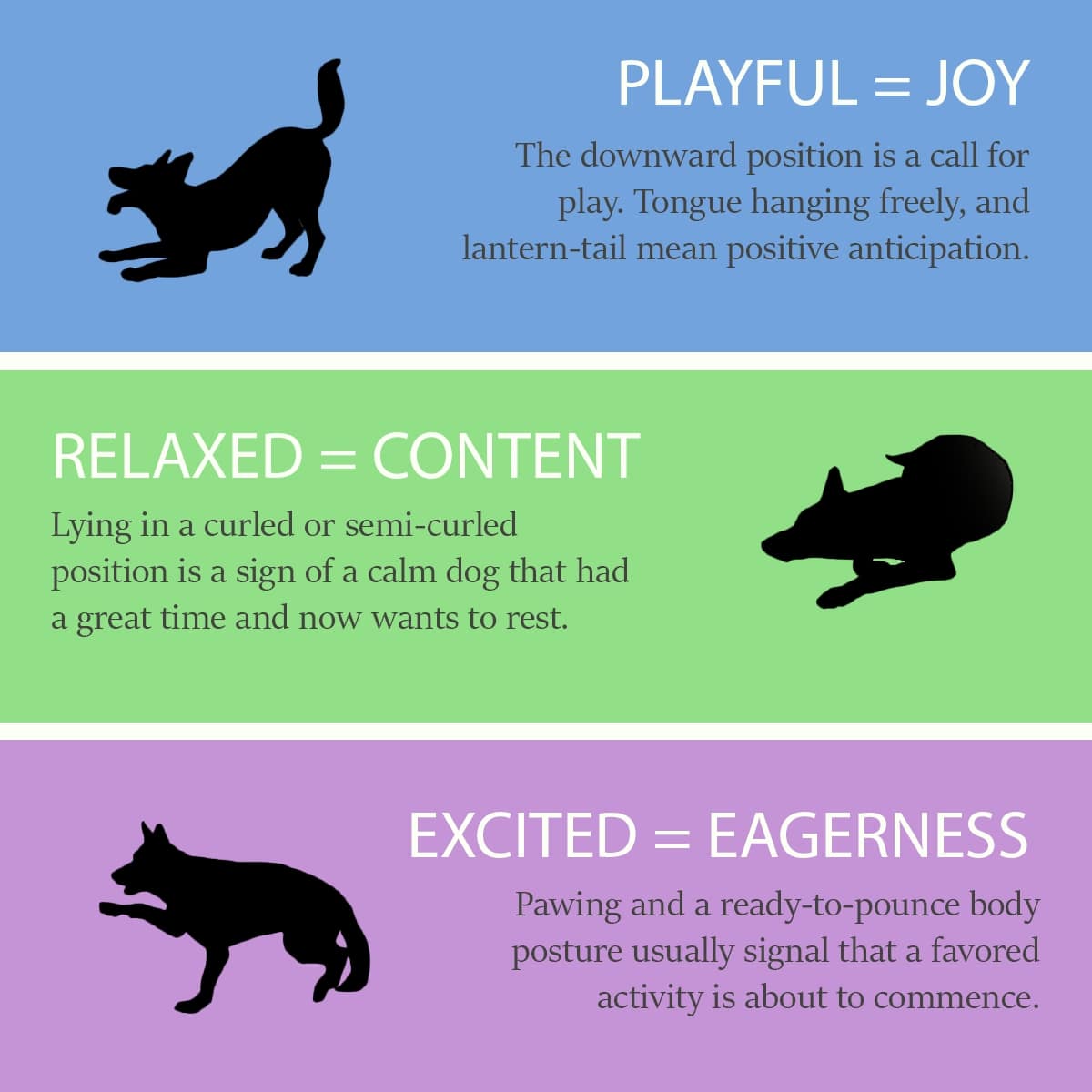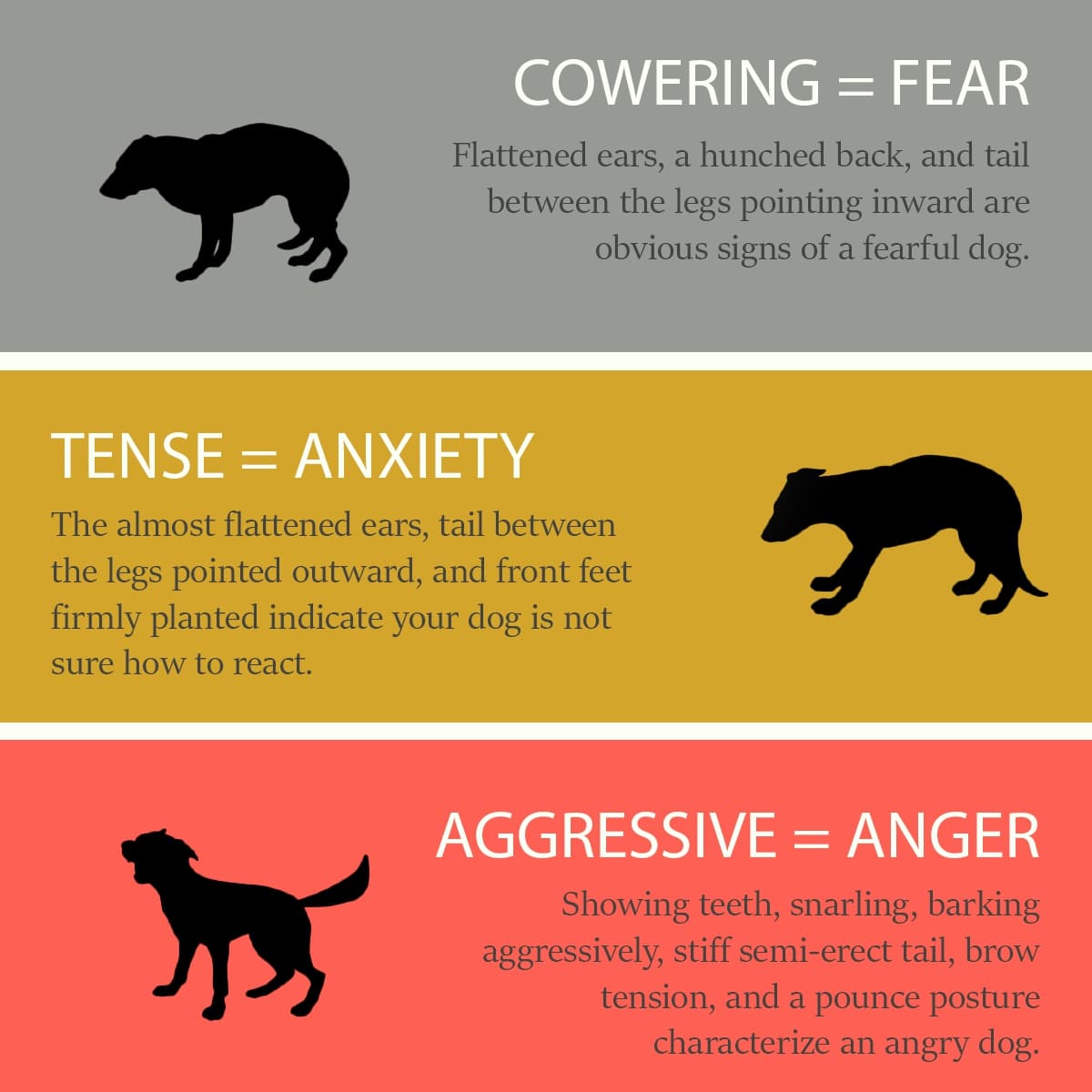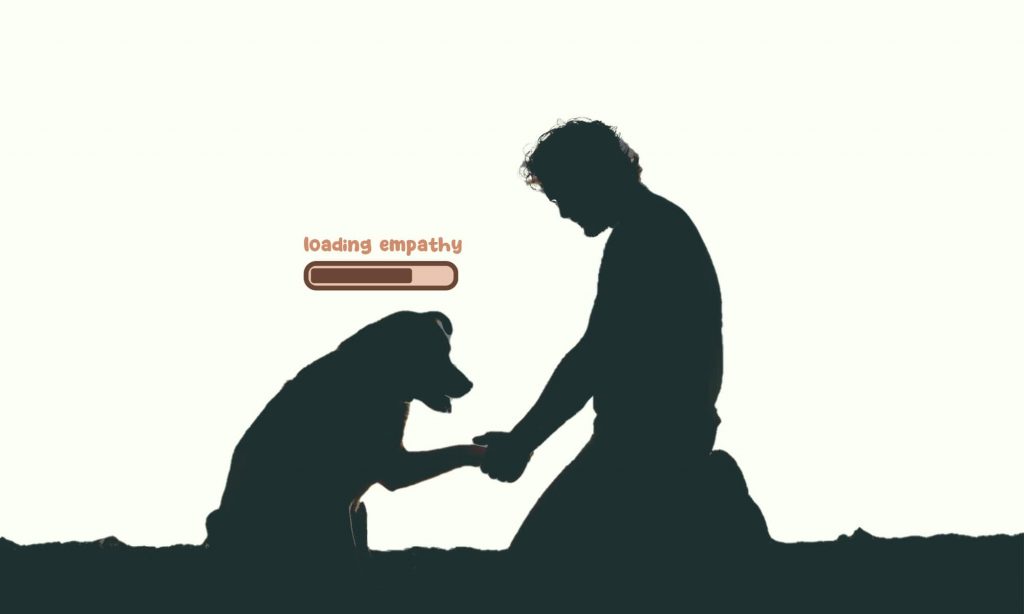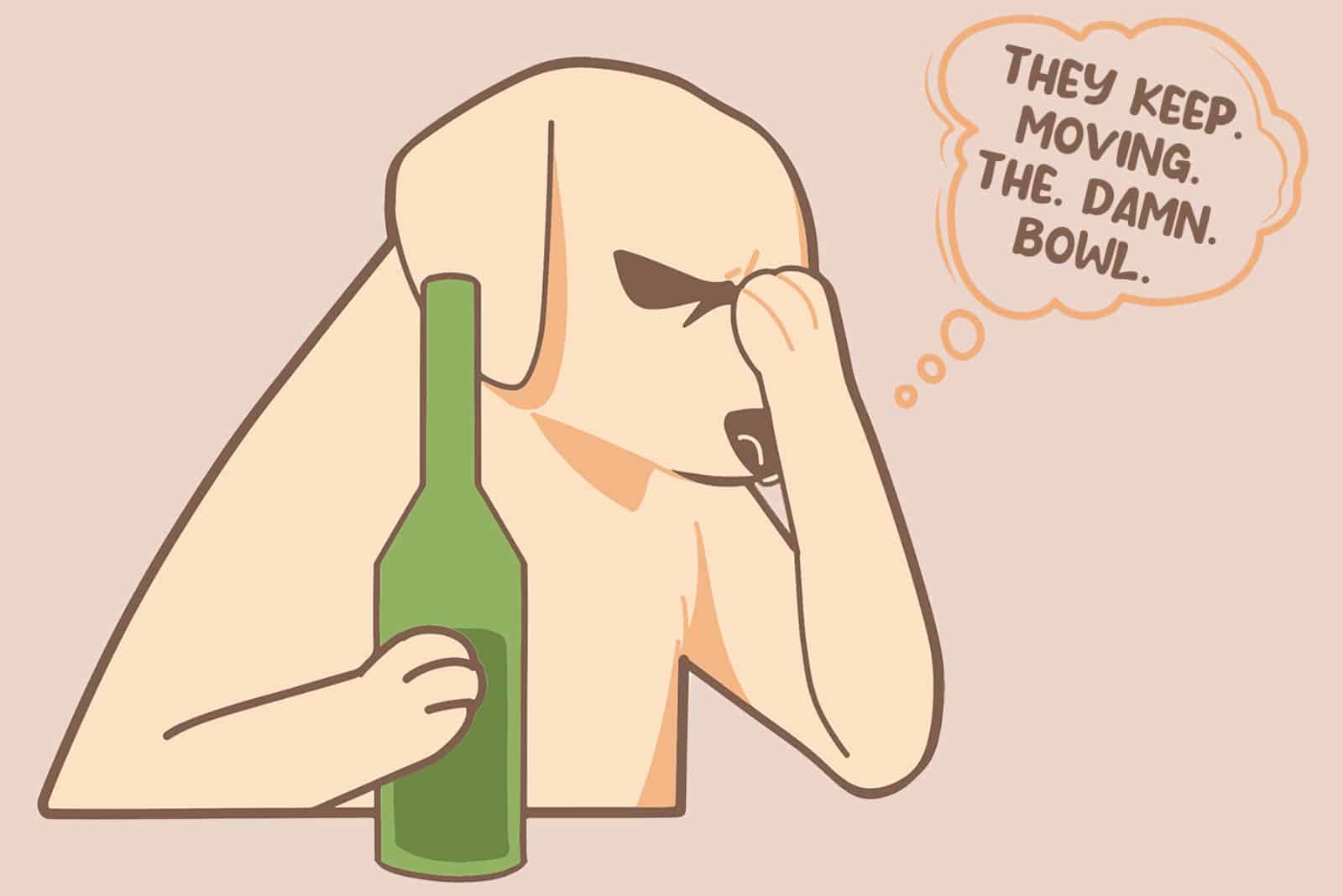Are you confused about your dog’s judgy looks, weird body language, or the general existence of dog emotions? Let me tell you. Canines are easy to understand as they have only the basic responses when it comes to emotion.
This illustrated guide has a chart that will help you put a finger on what your dog feels, and see for yourself whether your dog is a softy, a tough cookie, or the crazy type. Positivity breeds positivity, so let us start off with body language that tells exactly that.
Three Kinds Of Body Language That Express Good Vibes

Love Is Joy For Dogs
It is common for owners to say that their dog can feel and express love, but they actually cannot [1]. Love for canines is simply being joyous with a sprinkle of excitement on top. If dogs could love, we would probably have a lot less communication with other humans.
A joyous dog does not have to be only playful, though. A tongue hanging out paired with a bow indicate a positive state of mind. It always means an invitation for another dog or human to play. Their owner coming into the room can also be followed by a spark of joy.
Relax, Take It Easy
Paws or ground and head on feet is quite a vulnerable position for a dog. It expresses a feeling of safety while being completely relaxed. You will see this body language after the dog has had a good workout or before bedtime.
Of course, there are other body signs that a dog feels content and satisfied with its life. One of those is standing, tail in a natural position (hanging in neutral), tongue out, and ears relaxed. There will be no tension in the brows, and the posture will simply be laid-back.
Excitement Is A Double-Edged Sword
An eager dog is an eagle dog. Excited dogs usually keep focus on whatever is the source of their behavior. A door about to open, the sound of a food bowl, somebody’s voice, etc., can all get that front paw moving in an invitational gesture.
This glorious Shiba Inu puppy is the perfect example of an excited dog with the tail wagging, pawing, and change of body position. The head turn is hilarious, for sure.
Keep in mind that an excited dog does not necessarily mean a positive state of mind. Dogs that feel excitement and assume the pounce position might also signal that they are preying on other dogs or animals.
Confirming whether your excited dog’s intent comes from a bad state of mind is easy. If the pupils are dilated and the eyes are fixated on the target, you should snap your dog out of it by turning its attention elsewhere or using physical correction if necessary.
Another phenomenon dog owners are confused by is excitement urination. Puppies are most prone to this “problem”, but it is not rare that submissive adult canines pee when excited.
Canine Body Language That Indicates Negative Emotions

Fear And Anxiety Have Things In Common
The difference between fearful and anxious dogs is less apparent than between those two and aggression. Fear and anxiety can be difficult to read, especially for first time dog owners, but anger is pretty obvious.
Fearful dogs choose to avoid confrontation once the flight or fight mechanism is triggered. An anxious dog can become either aggressive or fearful, while one that expresses anger is definitely going to show aggression.
Anxious dogs are usually characterized as dogs that are neither fearful nor angry, but somewhere in between. The pent-up anxiety eventually becomes aggression or fearfulness. I have seen cases where dogs become completely anti-social, lethargic, and even urinate due to intense anxiety.
It is important to pay attention to tail and ear positions and facial expression when trying to figure out whether your dog is fearful or anxious. A good awareness of the situation your dog is in will most likely provide enough information to determine the correct emotion.
Anger Does Not Come Out Of Nowhere
Aggression is typically associated with certain breeds like Pitbulls, Rottweilers, and German shepherds, but small dogs are overall more aggressive than large ones. Still, dog breed and size are not the main factors that contribute to a dog expressing anger.
Negative experiences and abuse are the two main reasons a dog’s anxiety grows into anger, according to the VCA. It is mostly focused on the objects used in the process. Unfortunately, human hands or feet are those “objects” that inflict pain.
Physical punishment is another common reason for negative behavior. Dog owners who try to train their canines themselves can have problems during obedience training, so they resort to hitting their companions. This can also result in fear, anxiety, or anger.
What About Disgust?
The canine expression of disgust is quite clear and is exclusively expressed when foods with repugnant scent are introduced to them. Dogs instinctually distinguish food that is good and bad for them according to the smell it produces.
So, if you offer your canine companion foods that are potentially toxic or unhealthy for them, you might see them sneezing, grimacing (showing teeth and/or low growling), or even empty retching. It is a neat little trick us humans could benefit from as well.
Cabbage is apparently one of the foods dogs want until offered a piece. There is no need to explain this body language. So self-explanatory…

Dogs Have Basic Emotions And A Secret Weapon

The canine emotional palette consists of joy, fear, disgust, and anger, while missing emotions that dog owners often attribute to love, guilt, shame, and pride. Who better to help us understand dog psychology than a world-renowned dog psychologist and behaviorist.
As the godfather of dog psychology, Stanley Coren (Psychology Today), has established that dogs have approximately the intellectual capacity of a two or two and a half year old human child.
Speaking for WebMD, developmental psychologist Henry Wellman, says that two-year-olds can do a lot of things, but do not have a full range of human emotions at that age, but can express fear, disgust, excitement, joy, shyness, anger, and content.
Based on this principle, the Canadian Journal of Experimental Psychology conducted research with results clearly indicating that dogs not only have basic emotions, but also a rudimentary version of empathy [2].
With that realization, your dog looking “sad” or “concerned” is simply mimicking what you are feeling. The stronger the bond between owner and dog, the more empathy the canine will show.
In the previously mentioned research, dogs were highly sensitive to humans who pretended to cry, and showed an increased heart rate as well as higher likelihood of interacting with the “purpose” of comforting them.
Whether the person pretending to cry was familiar or unfamiliar to the dog, the response was identical. The belief that arose from this study is that the higher pitched tones of crying were more distressing to the dogs than normal voices or laughter.
An (Un)Emotional Conclusion
Having the five basic emotions certainly helped dogs create a harmonious relationship with humans, and it is not outrageous to believe that domestication contributed to its development.
Understanding dog emotions is simple if dog owners can abstain from trying to read and interpret them through the human side of things. Hopefully, you will be able to better discern how your dog feels from this article, and strengthen your bond even further.
References:
[1] Drebin, C., & Drebin, C. (2020, February 4). The love language of dogs: How dogs show love. The Dog People CA. Retrieved March 20, 2023, from https://www.rover.com/ca/blog/the-love-language-of-dogs-how-dogs-show-love/
[2] Silva, K., Bessa, J., & de Sousa, L. (2012, April 19). Auditory contagious yawning in domestic dogs (canis familiaris): First evidence for social modulation – animal cognition. SpringerLink. Retrieved February 24, 2023, from https://link.springer.com/article/10.1007/s10071-012-0473-2
